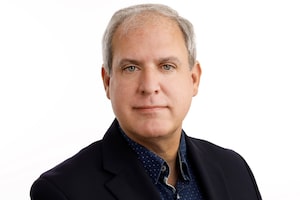The Bank of Canada’s former deputy governor, Carolyn Wilkins, went to Hamilton last week to do a presentation for Liberal cabinet ministers, and she must have cracked them up.
She and other economists told Liberal ministers that Ottawa’s fiscal policy should fit with the central bank’s tight-money policies to fight inflation but also watch out for a potential economic slowdown that would drive up unemployment and slash government revenues.
That’s funny because it suggests that Prime Minister Justin Trudeau’s government might change its direction and hold back on spending plans merely because of the economy.
Mr. Trudeau has a set of fiscal-policy instincts that only operate on one side of the ledger. As it happens, he faces an opponent, Conservative Leader Pierre Poilievre, who operates only on the other.
Part of that is just their partisan identities, Liberal and Conservative. But these two leaders are so defined by those brands that they stick to them without worrying about balance or circumstances. Each has their own hammer, so everything looks like their kind of nail.
Look at how Mr. Trudeau answered last week when he was asked what tough choices Ottawa would make because of higher interest rates: “As a government we have multiple priorities in being there for Canadians.” He went on to list a number of spending programs – dental-care payments, rental supports, child benefits – and then said his government does those things in a targeted way.
Apparently, the tough choice Mr. Trudeau’s government is going to make is spending on all the things it wants to spend on, no matter what happens. The plan is always to do more, to insist it can be done in a way that it can all fit together, and that there will never be negative consequences.
Now look at how Mr. Poilievre answered when he was asked last week if he favours some temporary supports to low-income Canadians who are particularly hurt by inflation. After insisting that such Canadians are suffering the most, he said the Conservatives would cut the carbon tax and reform marginal tax rates for them.
Those are the Conservatives’ policies all the time, but neither would have much of an impact any time soon on the bottom line of low-income Canadians. Mr. Poilievre has said he would appoint a task force to work out those tax-reform plans, and that would mean that such Canadians wouldn’t see any change for some time. No matter. Every economic question gets a similar answer, and if that is his plan for inflation well, it will be his plan for a recession, too.
To be fair, Mr. Trudeau’s government did shift its policies in response to a major crisis, the COVID-19 pandemic, pouring out even more money to stabilize the economy. At the time, Mr. Poilievre arguably went more against type at the time by supporting public-support spending as necessary, even if he questions it more in retrospect.
But until disaster actually strikes, the economic approaches of these two leaders will be like two broken clocks: sometimes right, sometimes wrong, but never changing. The old notion that governments might play a role in managing the economy has no place in the single-mindedness of their political branding. The economists and experts warning we might be at an inflection danger point aren’t likely to trigger reflection, let alone adjustment.
A group including David Dodge, the former governor of the Bank of Canada, warned last week that sustained high interest rates and a 2023 recession could clobber the government’s current budget projections. There’s debate about that, of course: UBC economist Kevin Milligan, one of the experts who briefed the Liberal cabinet, sees less risk, although still cause for budget caution.
The issue isn’t that the public finances are looking scary right now. Current deficits are substantial but not huge by international standards. But Mr. Trudeau’s multiple-priority promises for lasting spending are still piling up, now and for the future.
Ottawa is close to a health care funding deal with the provinces, which could add $10-billion to $15-billion per year. Mr. Trudeau’s government has pledged to respond to the U.S.’s vast program of breaks for green technology investment, and that means billions. The parliamentary alliance with the NDP calls for a dental-care program this year and pharmacare next year. Last year’s budget promised a defence policy review that implied a rebuilding of the military.
Perhaps Finance Minister Chrystia Freeland can find a way to recycle a few of the billions in promised spending from previous budgets so that it can be used for all those things. But would the Liberals really alter their plans because of the economy? That doesn’t seem to be the way Canadian politics works.
 Campbell Clark
Campbell Clark